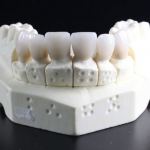- Like
- SHARE
- Digg
- Del
- Tumblr
- VKontakte
- Flattr
- Buffer
- Love This
- Save
- Odnoklassniki
- Meneame
- Blogger
- Amazon
- Yahoo Mail
- Gmail
- AOL
- Newsvine
- HackerNews
- Evernote
- MySpace
- Mail.ru
- Viadeo
- Line
- Comments
- Yummly
- SMS
- Viber
- Telegram
- JOIN
- Skype
- Facebook Messenger
- Kakao
- LiveJournal
- Yammer
- Edgar
- Fintel
- Mix
- Instapaper
- Copy Link
Every 40 seconds, someone in the United States has a stroke, an often deadly condition that occurs when blood flow to the brain is interrupted. Roughly 25 percent of stroke patients have suffered a stroke before.
Proper nutrition, exercise, and other healthy lifestyle factors are central to avoiding these brain attacks—especially for stroke survivors. “Stroke can be a life-changing event,” says Amytis Towfighi, MD, an associate professor of neurology and the James and Dorothy Williams Stroke Scholar at the Keck School of Medicine of the University of Southern California. “Over the years, I found that patients were often surprised to hear that four out of five strokes could be prevented through changes in lifestyle and blood pressure control. Yet, knowing what to do is only half the battle. The far more difficult task is making changes to highly ingrained habits, particularly when life gets in the way. This has become the focus of my research.”
Towfighi has teamed with seasoned health writer and dietitian Laura Stevens—who reached out to the neurologist after experiencing a stroke herself—to coauthor the comprehensive new book What You Must Know About Strokes: How to Recover from a Stroke and How to Prevent Another Stroke (Square One Publishers, 2020). “I was thrilled to have the opportunity to collaborate with her,” says Towfighi of Stevens, and “to provide people with advice and tools to help them prevent a stroke.”
Everyone Wants to Know …
BN: How important are diet and related health conditions in preventing strokes?
AT: Four out of five strokes are caused by five key factors: blood pressure, smoking, poor diet, physical inactivity, and abdominal obesity.
This means that most strokes can be avoided. Other stroke risk factors tied to diet include diabetes and cholesterol abnormalities.
BN: What are some essential lifestyle tips that can help keep us stroke-free?
AT: Get at least 150 minutes per week of moderate-intensity aerobic activity or 75 minutes per week of vigorous aerobic activity. Get up and move throughout the day. Eat at least five servings of fruits and vegetables a day. Don’t smoke. Drink alcohol in moderation—one drink or less per day for women and two drinks or less per day for men. And maintain a normal body mass index (i.e., 18.5-25 kg/m2).
BN: Which foods—and diets—are key to stroke prevention?
AT: The Mediterranean diet has been shown to reduce the risk of stroke in a large trial. Key components of this famous diet include:
- Three servings of fresh fruit a day
- Two or more servings of vegetables a day
- Three or more servings of seafood or fish—especially fatty fish—per week
- Three or more servings of legumes a week
- Four tablespoons of olive oil a day
- Three or more servings of tree nuts a week
- Two servings of sofrito a week
- Emphasizing white meat over red meat
BN: What is sofrito and why should we make it twice a week to prevent stroke?
AT: Sofrito is a typical technique of lightly frying onions and garlic in extra virgin olive oil. Tomato sofrito is a staple of many Mediterranean dishes. Recent studies have suggested that the process of sautéing tomatoes, onion, and garlic in olive oil may improve the bioavailability of healthy compounds (such as polyphenols and carotenoids), allowing the body to better absorb these healthy nutrients.
BN: What role does whole-fat dairy—even cheese, which is high in saturated fat—play in stroke risk?
AT: The dairy story is an interesting one. For years, dietary guidelines have recommended low-fat or non-fat dairy products in an effort to reduce calorie and fat consumption. However, foods are not simply a collection of components, such as fat and calories, but rather complex matrices with more nuanced effects on health. Recent studies, including a review of 37 trials enrolling nearly 185,000 participants, have shown that whole-fat dairy does not cause weight gain; dairy consumption improves body composition by increasing lean body mass and reducing body fat; yogurt consumption reduces weight gain; fermented dairy, including cheese, lowers cardiovascular risk; and yogurt, cheese, and even dairy fat protect against type 2 diabetes.
There are several potential reasons for the health benefits of whole-fat dairy. First, compared with meat, dairy has a greater proportion of short and medium chain fatty acids. These shorter fatty acids may have beneficial health effects. Second, yogurt contains probiotics, which have been shown to improve sugar levels in the blood, reduce body weight, lower BMI, and lower fat percentage. Also, fermented dairy products lower risk of diabetes and cardiovascular risk.
BN: Is there another core takeaway from your book that you would like to share?
AT: It’s essential to know the signs and symptoms of stroke—an easy way to remember these things is using the acronym FAST:
Face: Is a person’s smile uneven? Is one side drooping?
Arm: When raised, is one arm drifting down or paralyzed?
Speech: Is the speech difficult to understand? Can the patient understand what you are saying?
Time: Time to call 911. If you spot any of these signs in yourself or someone else, call 911 right away.
“Knowing what to do is only half the battle,” says Amytis Towfighi, MD. “The far more difficult task is making changes to highly ingrained habits, particularly when life gets in the way. This has become the focus of my research.”
Cooking for Stroke Prevention
• Mediterranean Sofrito recipe
• Persian Yogurt & Cucumber Salad recipe


